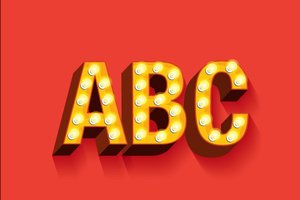By

Credit: lyeyee/Shutterstock
The font you use on your resume might seem unimportant, but the devil is in the details. The typeface you choose conveys more about your personality, style and professionalism than you might think – it could impact a hiring manager’s impression of you before they’ve even read your qualifications.
“Since a prospective employer is looking at the resume for only [a few] seconds, you want [a font] that is aesthetically pleasing and grabs the employer’s attention at a quick glance,” said Wendi Weiner, a certified professional resume writer and founder of The Writing Guru.
There are countless available fonts, so how can you find the right one for your resume? Start by identifying the font family you like best – serif or sans-serif, for example – while keeping in mind the vibe you’re trying to impress upon the hiring manager. A Weemss infographic on the psychology of fonts said that serif typefaces are associated with being reliable, impressive, respectable, authoritative and traditional, while sans-serif fonts are seen as universal, clean, modern, objective and stable.

No matter which font family you choose, your typeface should be easy on the eyes and should show up well both in print and on a screen, regardless of size or formatting. It’s also a good idea to choose a standard, universal font that works on any computer’s operating system, as your resume will also likely be scanned by automated applicant-tracking software.
Once you’ve chosen a font family, you can narrow down specific styles. Fonts like Times New Roman, for example, boast stylized text with decorative markings and tails on letters (a trademark of the serif font family,) while sans-serif fonts like Arial are sleek and simple, with no frills.
According to resume and career experts, here are the best font choices for job seekers, and the kind of message each one sends to potential employers.
1. Arial
If you want to use a sans-serif font, Arial is one of the best options for your resume. Barbara Safani, executive resume writer, career coach, job search strategist and president of Career Solvers, told AOL Jobs that she likes to see the Arial font because the lines are clean and it’s easy to read. A Creative Group blog post noted that some hiring managers may find Arial to be banal and unsophisticated. However, this tried-and-true classic has become a standard and is definitely a safe choice.
2. Calibri
As the default Microsoft Word font, Calibri is an excellent option for a safe, universally readable font. Professional resume writer Donna Svei is a strong advocate of Calibri on resumes, noting on her blog that this font is familiar to most readers and renders well on computer screens. Svei also said 12-point Calibri produces a “perfectly sized” two-page resume of 550 to 750 words.
3. Cambria
This serif font is another “default-type” font that works well for a resume because many recruiters are familiar with it. A Monster.com blog post describes Cambria as being “not as formal as Times New Roman, but just as dependable.”
4. Didot
If you work in a creative industry like fashion or photography, you can showcase your style and sophistication with Didot. A Canva Design School blog post called this serif font “distinctive” and classy,” praising its upscale look. However, author Janie Kliever cautioned job seekers that, since delicate serifs display best at larger sizes, you may want to use Didot only for headings on your resume. Download it from UFonts.
5. Garamond
Job seekers looking for an old-style font should consider using Garamond for their resumes. This timeless typeface has “a simple elegance that looks polished in print … or on screen,” wrote The Creative Group.
6. Georgia
If you want a traditional-looking alternative to the oft-overused Times New Roman, consider switching to Georgia. A Colorado Technical University infographic on Mashable recommended using Georgia because of its readability: The font was designed to be read on screens and is available on any computer.
7. Helvetica
This clean, modern, sans-serif font is a favorite among designers and typographers. Helvetica appears in numerous corporate brand logos (Nestle, Lufthansa and American Apparel, to name a few) and even on New York City subway signs. In an article on Bloomberg Business, typography expert Brian Hoff of Brian Hoff Design described it as “professional, lighthearted and honest,” noting that it reads as “business-y.” Helvetica comes preloaded on Macs, but PC users can download it from The Fonty.
8. Times New Roman
Despite being called the “sweatpants of fonts,” this universally recognized typeface remains a popular resume choice. Marcia LaReau, founder and president of Career Strategist, wrote on Forward Motion Careers that Times New Roman will show up as clean, easy-to-read text on any computer. While this font is highly readable and safe, be aware that, as with Arial, using it may be construed as boring and unimaginative, and it is unlikely to stand out in a sea of resumes.
9. Trebuchet MS
Job seekers who want a sans-serif typeface but don’t want to use Arial or Verdana can switch to Trebuchet MS. According to ZipJob, this font was specifically designed to appear well on a screen. It’s also a bit more textured and modern-looking than many traditional resume fonts.
Here are a few other popular résumé font choices that are clear, legible and scalable:
Serif – Bell MT, Bodoni MT, Book Antiqua, Bookman Old Style, Goudy Old Style
Sans-serif – Century Gothic, Gill Sans MT, Lucida Sans, Tahoma, Verdana
Additional reporting by Chad Brooks and Nicole Fallon. Some source interviews were conducted for a previous version of this article.





















